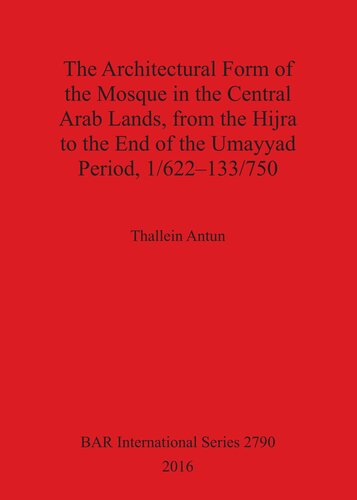

Most ebook files are in PDF format, so you can easily read them using various software such as Foxit Reader or directly on the Google Chrome browser.
Some ebook files are released by publishers in other formats such as .awz, .mobi, .epub, .fb2, etc. You may need to install specific software to read these formats on mobile/PC, such as Calibre.
Please read the tutorial at this link: https://ebookbell.com/faq
We offer FREE conversion to the popular formats you request; however, this may take some time. Therefore, right after payment, please email us, and we will try to provide the service as quickly as possible.
For some exceptional file formats or broken links (if any), please refrain from opening any disputes. Instead, email us first, and we will try to assist within a maximum of 6 hours.
EbookBell Team

4.4
102 reviewsThis book examines the development of the mosque from the hijra (A.H.1/A.D.622) to the fall of the Umayyad dynasty (A.H.133/A.D.750). The aims of the book are two-fold. Firstly, to consider how those mosques for which we only have literary evidence may be approached for study; and secondly, to trace the development of the mosque in the archaeological record. The archaeological evidence for the mosques at W¢asiçt, Isk¢af Ban³ Junayd, K¢ufa and the Aqâ¢a mosque at Jerusalem are examined in detail; there follows an examination of the form and layout of the various types of mosque encountered in the physical record, and a discussion of some architectural influences which may have affected the development of form. The book also considers thosemosques for which no secure archaeological evidence may be cited and attempts to pick apart previous attempted reconstructions of these buildings which were often based on an uncritical approach to the literary sources.